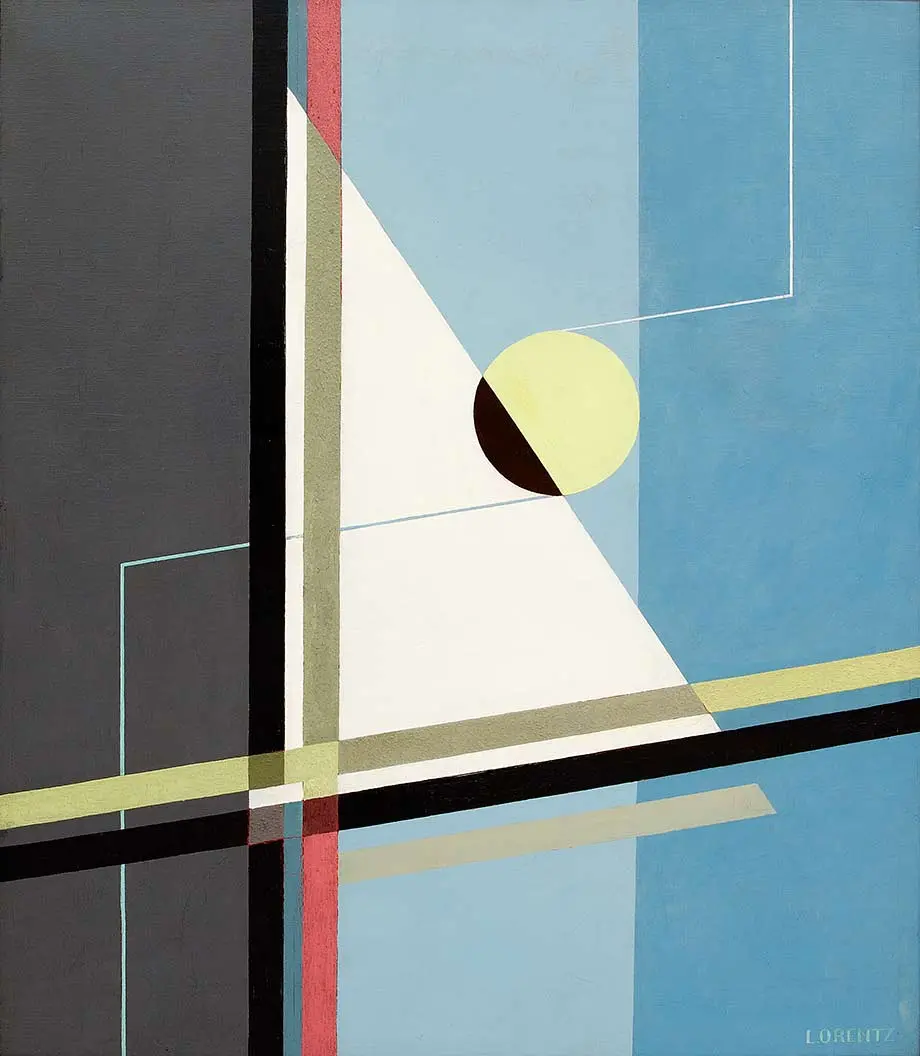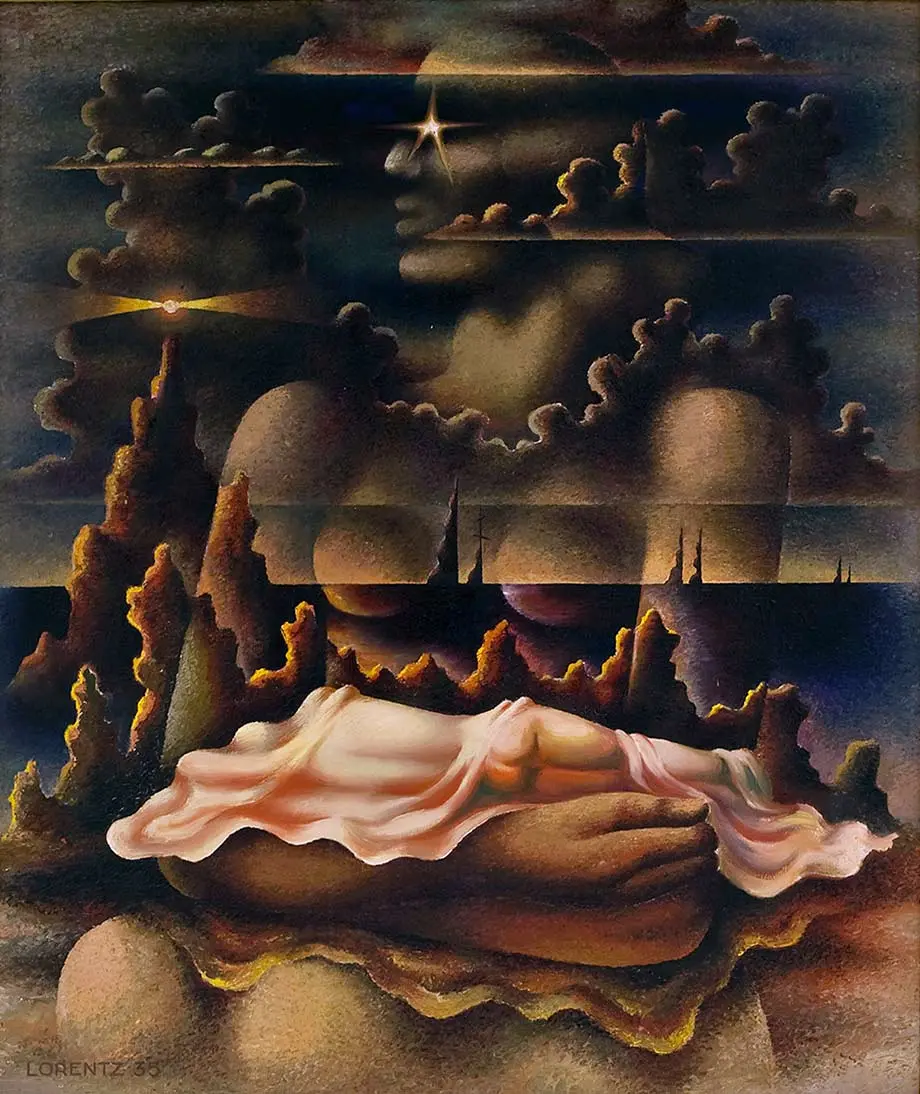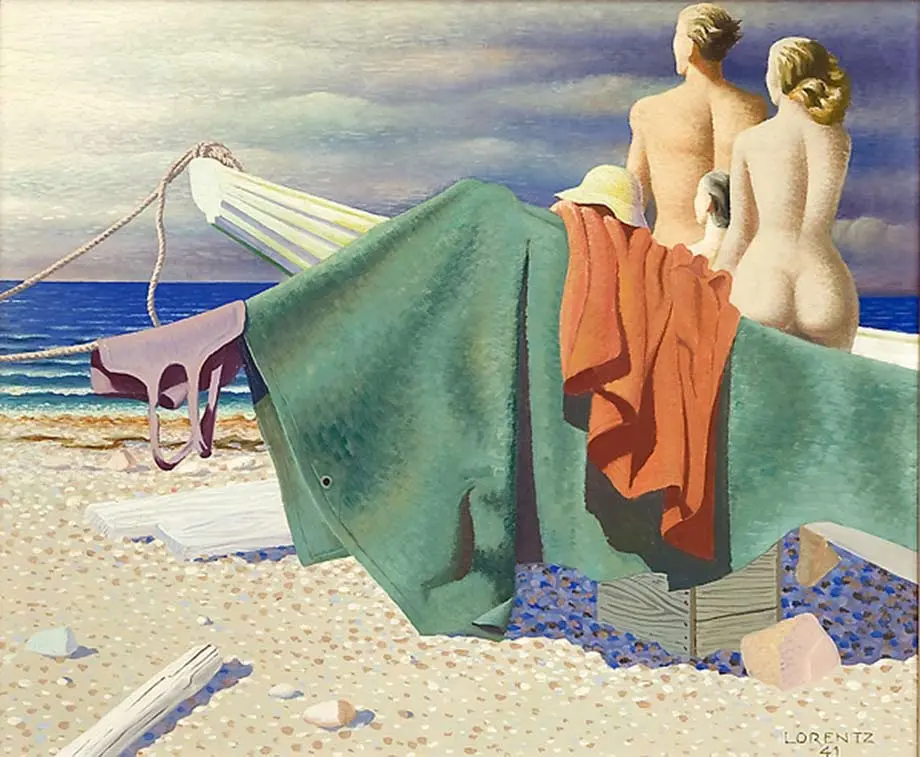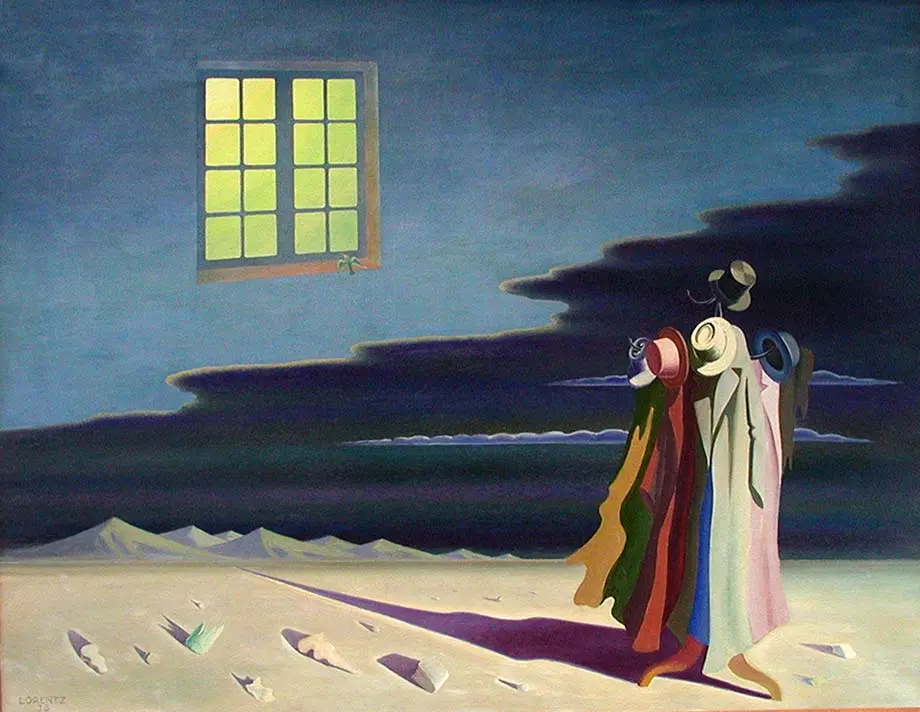Waldemar Lorentzon
Waldemar Lorentzon (1899–1984) was one of six artists in the Halmstad Group.
Studies i Stockholm and Germany
Born in Halmstad in 1899. His parents are farmers. In 1915 Waldemar Lorentzon forms the Gnistan group along with his cousins, Axel and Erik Olson. Makes his debut at an amateur exhibition in Halmstad in 1919 and is discovered by art connoisseur Egon Östlund, who arranges a contact with Gösta Adrian-Nilsson. Lorentzon studies at Carl Wilhelmson´s art school in 1919 and at Althin´s art school in Stockholm in 1920- 21. In1922 he goes on a study trip to Germany. In 1923 Halmstad Mayor Bissmark becomes his patron, and at the beginning of 1924 Lorentzon travels to Paris along with cousin Erik Olson. They enrol as students in Fernand Léger´s Académie Moderne art academy and are trained in the cubist school of art.
Travel to Paris
In October 1924 he takes part in Léger´s student exhibition at Maison Watteau together with E. Olson, Franciska Clausen and Otto G. Carlsund, where he shows “Stilleben med nothäfte" (Still Life with Music), among other works. After a period in Halmstad, he travels back to Paris in the autumn of 1925 and stays there until the summer of1926. InDecember 1925 he participates in the major international exhibition L´Art d´Aujourd`hui, featuring abstract art by painters such as Picasso, Severini and Léger. Ozenfant, who founded purism in 1918 along with Le Corbusier, is now teaching at Léger´s Académie Moderne and becomes Lorentzon´s instructor. During his Paris stay he is influenced by Marc Chagall as well as Giorgio de Chirico, one of surrealism´s forerunners. In Halmstad he is reunited with Axel Olson and supports himself with advertising work.
The Halmstad group
In 1929 he and Axel Olson decorate the walls and ceiling of the chapel in Skavböke. The biblical scenes bear the stamp of the contemporary avant-garde style. In the autumn of the same year he is involved in the formation of the Halmstad Group along with Axel and Erik Olson, Sven Jonson Esaias Thorén and Stellan Mörner. Under the influence of Ozenfant and purism, he paints “Violin och kruka" (Violin and Pot) in 1931 and for a short period approaches the concrete art style in “Nuit transparente" (Transparent Night) in1931. In1932 he marries Ingrid Sterner.

Waldemar Lorentzon, "Nuit Transparent", 1931
In 1934 Lorentzon´s artistry is considered to be surrealistic. He takes part in the international Kubisme=Surrealisme exhibition in Copenhagen in 1935 and paints his masterpiece, “Kosmisk moder" (Cosmic Mother), the same year. During the second half of the 1930s, his surrealism is characterised by metaphysical landscapes filled with double meanings. In 1938 he becomes associated with the Oxford Group, an international religious revival movement. For Waldemar Lorentzon, as well as for Erik Olson, there is no incompatibility between Christianity and surrealism.

Waldemar Lorentzon, "Kosmisk moder", 1935
The 40s and 50s
During the 1940s his images are influenced by war and human suffering, which find expression in a series of religious paintings. He also participates in the Söndrum Colony, an artists association by the Halmstad sea coast, along with Sven “the X" Erixson, Felix Hatz and members of the Halmstad Group.
The 1950s are devoted almost entirely to mural paintings in churches throughout Sweden. During the 1950s and 1960s the small mountain villages in southern Spain where he often stayed set their stamp on his paintings. However, his major source of inspiration continues to be the Halland sea coast. Waldemar Lorentzon departed this life in 1984.

Waldemar Lorentzon, "Havet ger", 1941

Waldemar Lorentzon, "Ödesnatt", 1938
